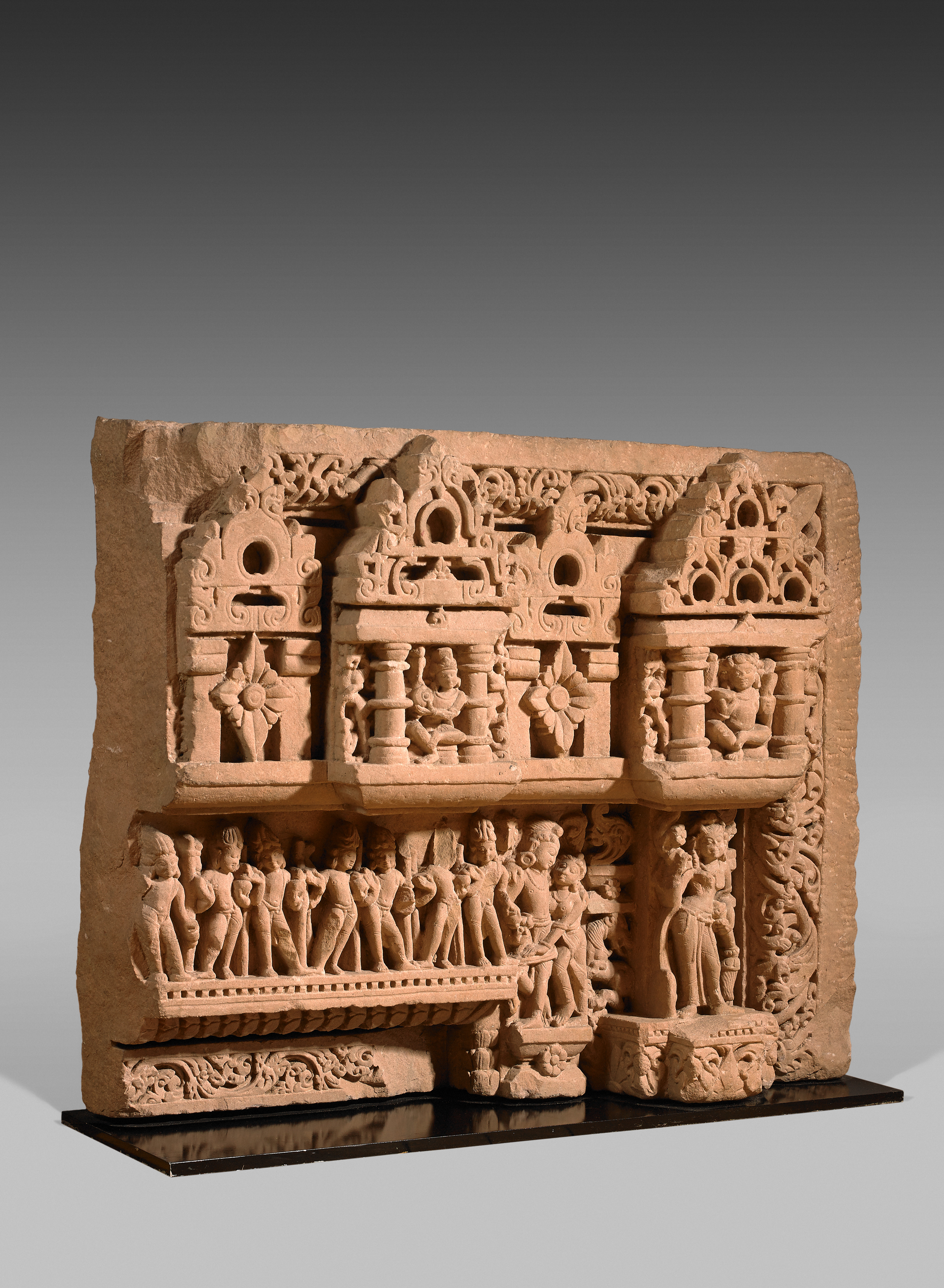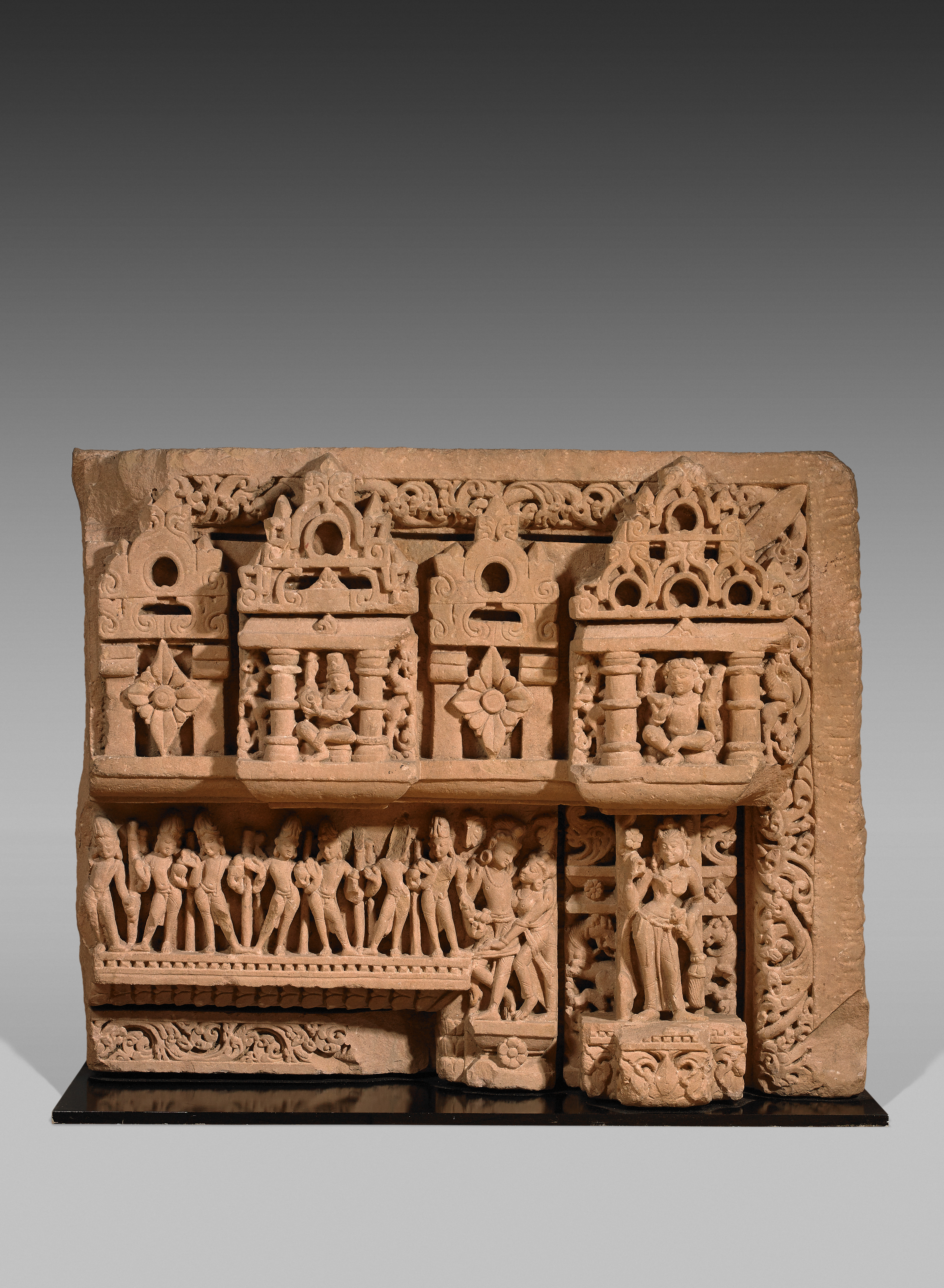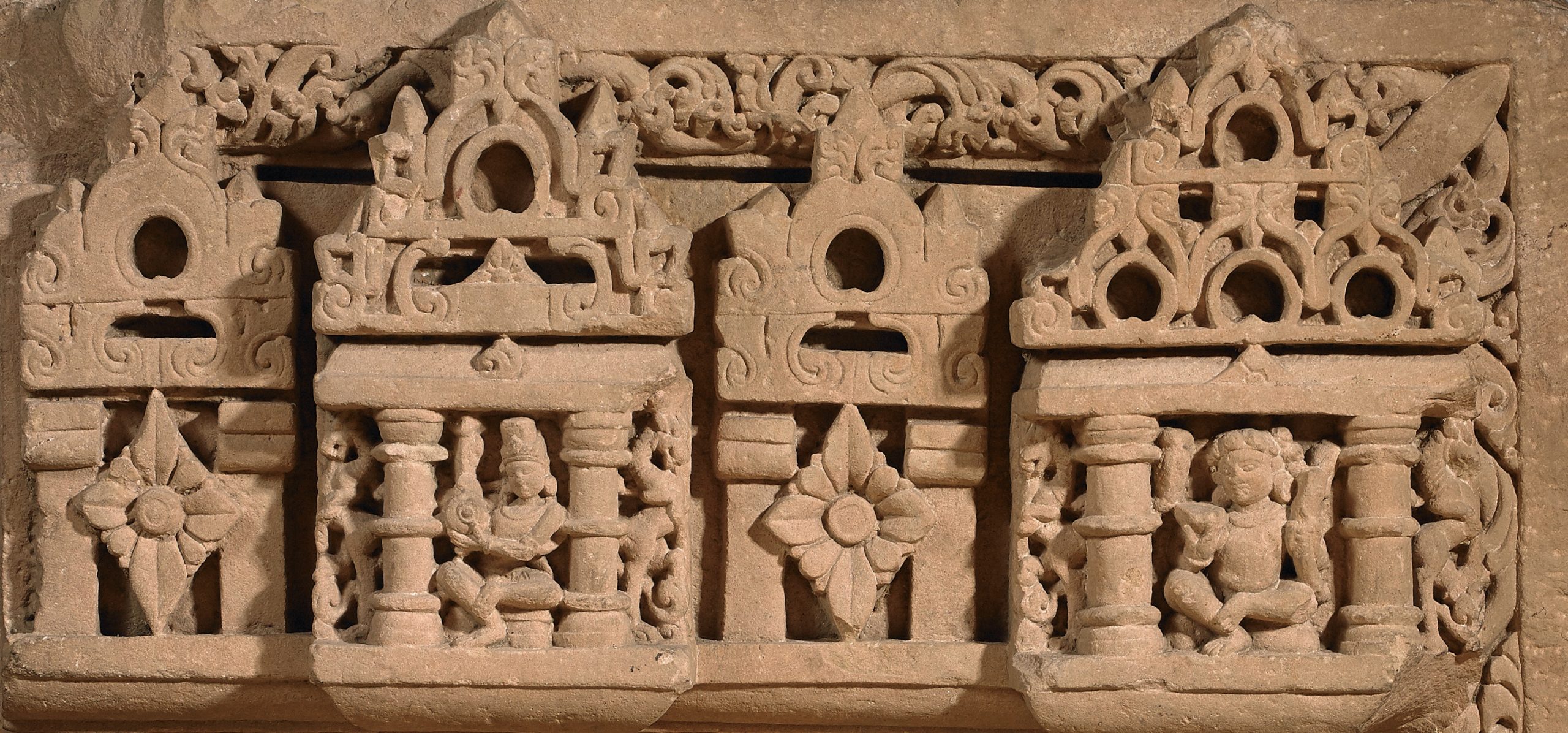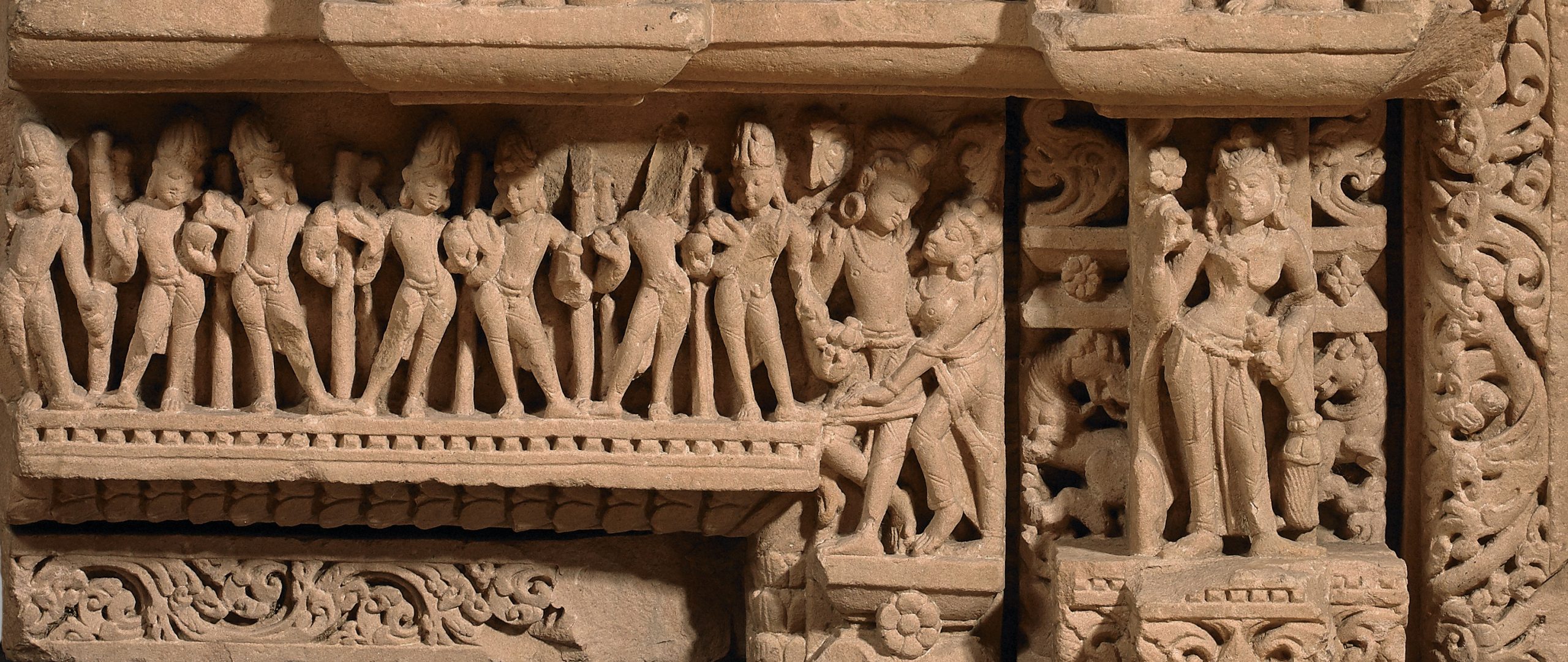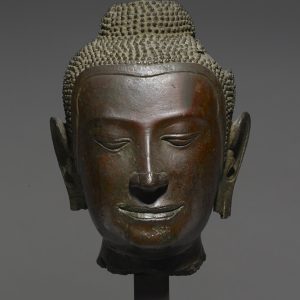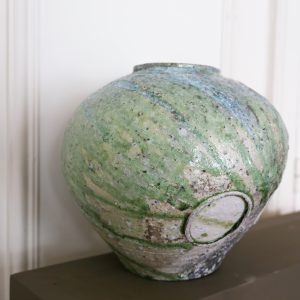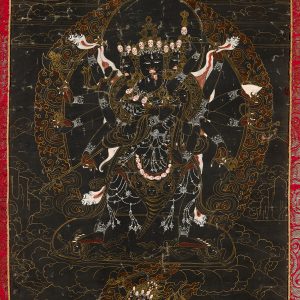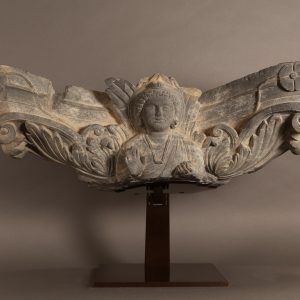Architectural fragment
Sandstone
Central India or Rājasthān
11th or 12th century
H. 64 cm or 25 ¼ in
Description
This fragment of a lintel and the top of this jamb are both characteristic of the architecture of India in the medieval period (9th – 12th century). At that time, sanctuaries were covered with sculptures that blended divinities with a stereotypical architectural decor.
As the central part of the lintel, generally bearing the face of the divinity to which the temple is dedicated, is missing, it’s hard to make any pertinent comments about this large relief. Likewise, the attributes of such characters are hard to make out. So, any identification is pure conjecture. Nevertheless, the young woman at the top of the abutment might be the great goddess of Hinduism. She is surrounded by various animals symbolic of the various strata of the world. The lovers next to her are not the usual mithuna frequently found on the facades of temples. The man’s hair is pulled back in the heavy bun worn by ascetics, reminiscent of śaiva with its well-documented sexual Tantric practices.
More hypothetical are the other characters, including the series of virile men with their topknots, paired off in front of a gallery with slender columns, partially conserved. This detail is very unusual. It is also very difficult to identify the two small characters on the top register. The one sheltered in the shrine on the right is surrounded by children. The other, more centered, holds some sort of attribute. Similar shrines probably ran the length of the register, perhaps five in all. The absence of the three other characters makes it impossible to clearly identify the group they would have formed, maybe some ṛṣi of śaiva tradition.
Architectural elements make up a good part of the composition’s structure. Smooth parts, such as the pilasters, contrast with more highly decorated parts: mask of a lion or kīrtimukha at the top of the abutment, extremely stylized flat floral banners, and especially multiple small Indian arches.
Such oval openings are found very early on in Indian architecture. A large Indian arch let air and light in at the top of the facades of caves excavated as of the 2nd century B.C.E. Their terminology remains problematic, even if some authors call them “kudu”, “holes” or “window gavakṣa”, “cow-ear-shaped window”. After a long evolution, during which they multiplied, they end up covering with a fine fishnet pattern the facades of the towers (śikhara) that rise over the cella chambers of Hindu temples. Grouped on certain central bands during the Gupta era (4th – 6th century), they eventually covered the entire upper sections as of the 8th century, evidently first in Rājasthān and then throughout northern India by the time of the Gurjara-Pratihāra Dynasty (6th – 11th century).
Provenance: Spink & Son, London, 1996.
Art Loss Register Certificate, ref. S00109292.

